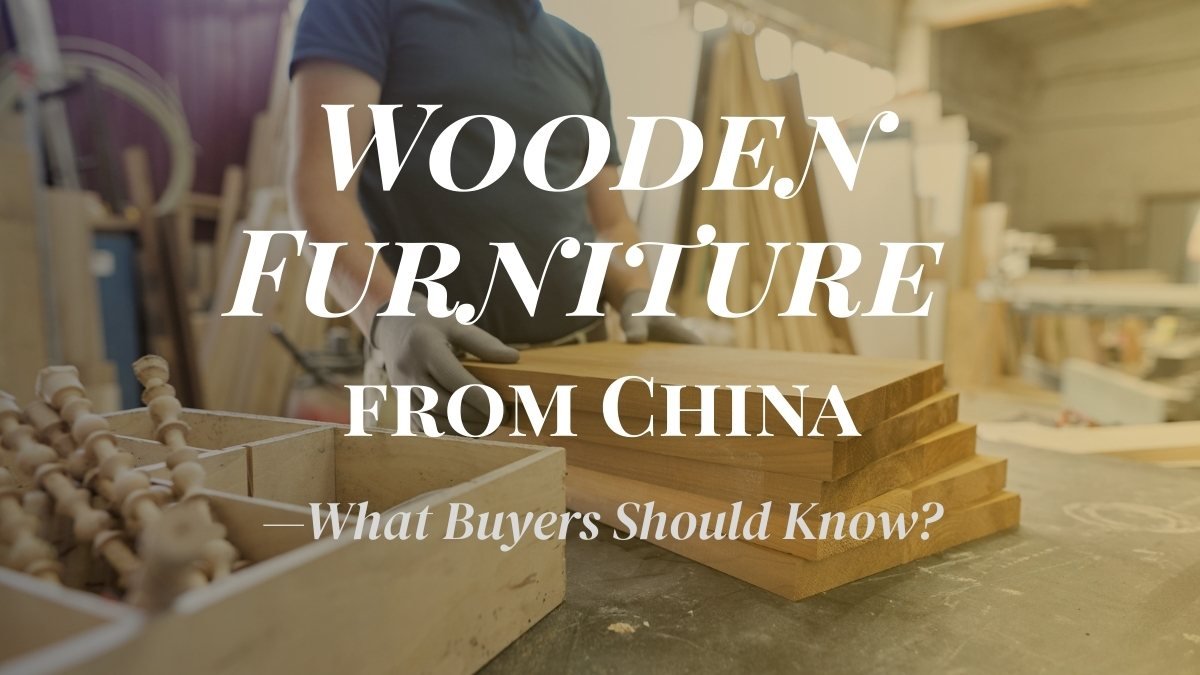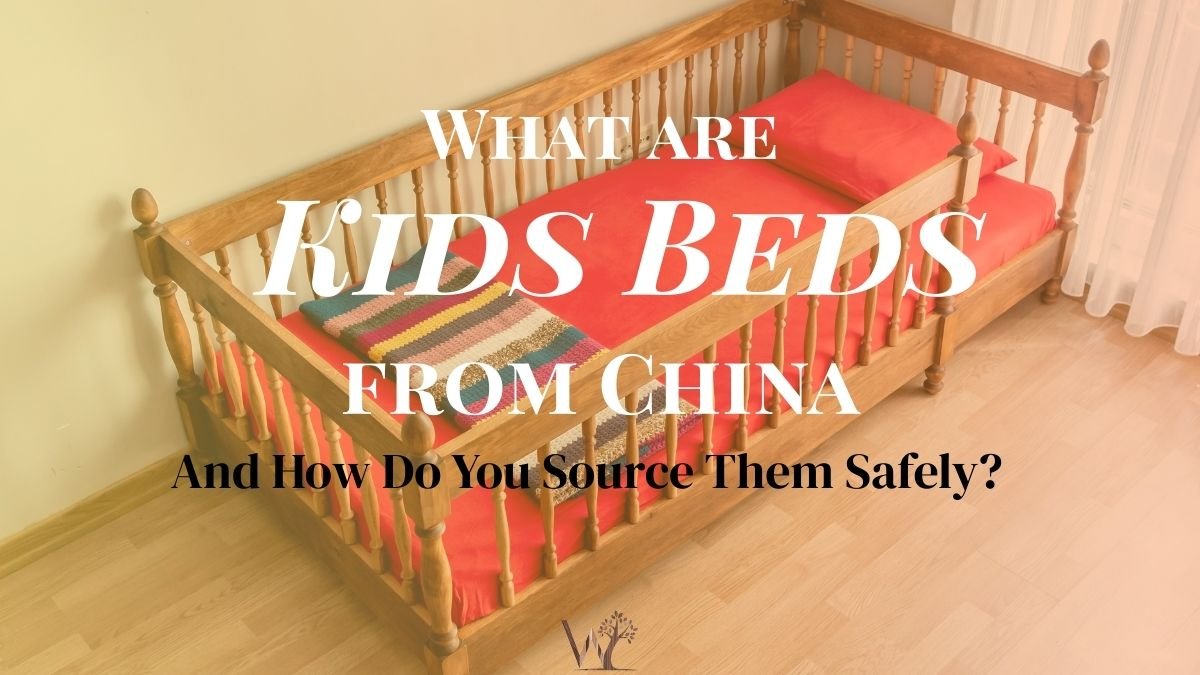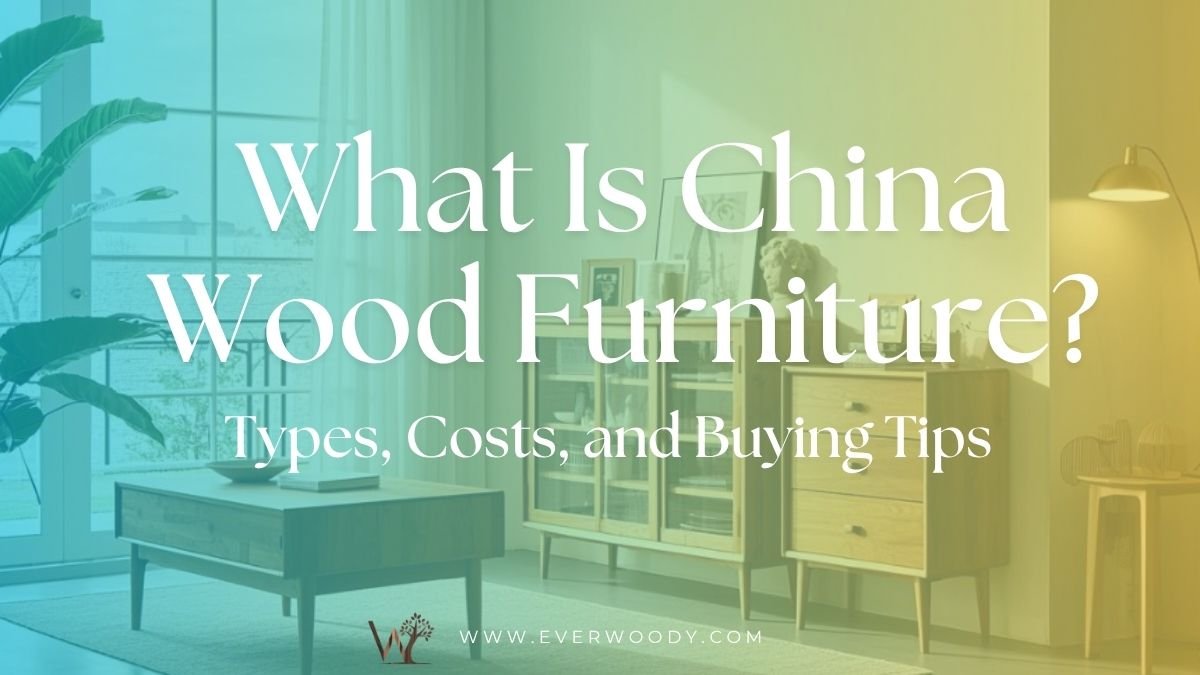When it comes to outdoor furniture, choosing the right wood isn’t just about looks—it’s about longevity, resilience, and style that stands the test of time. Harsh sunlight, relentless rain, and fluctuating temperatures can wreak havoc on the wrong choice, leaving your furniture faded, cracked, or even rotting. That’s why selecting the best wood for outdoor furniture is crucial for creating an inviting, long-lasting outdoor retreat.
From luxurious teak to budget-friendly acacia, each wood type offers unique benefits that cater to different styles, climates, and maintenance preferences. Whether you’re after natural elegance or low-maintenance durability, finding the perfect match will elevate your outdoor space and maximize your investment.
I. Why Choosing the Right Wood Matters
Selecting the appropriate wood for your outdoor furniture is pivotal. It ensures longevity, minimizes maintenance, and enhances the beauty of your outdoor spaces.
- Weather Resistance: Different woods react uniquely to environmental factors. For instance, teak’s natural oils make it highly resistant to moisture and UV rays, preventing warping and cracking. In contrast, woods like pine may require additional treatments to withstand the elements.
- Durability: The lifespan of outdoor furniture heavily depends on the wood’s inherent durability. Hardwoods such as teak and ipe are renowned for their strength and can endure decades with minimal wear. Conversely, softer woods might succumb to decay more rapidly if not properly maintained.
- Aesthetics: The visual appeal of your furniture is influenced by the wood’s grain, color, and texture. Mahogany offers a rich, reddish-brown hue that adds elegance, while cedar provides a rustic charm with its distinct aroma and natural tones.
- Cost vs. Value: While premium woods like teak come with a higher upfront cost, their minimal maintenance and extended lifespan often provide better value over time. On the other hand, more affordable options like acacia can be cost-effective but might require more frequent upkeep.
II. Factors to Consider When Choosing Outdoor Furniture Wood
When selecting wood for outdoor furniture, it’s essential to evaluate several key factors to ensure your pieces withstand the test of time and elements.
- Climate Considerations:
- Effects of Humidity, Rain, and Extreme Heat on Wood: Woods like cedar and redwood naturally resist moisture, making them suitable for humid or rainy climates. In contrast, untreated softwoods may swell or warp under similar conditions.
- Best Wood Options for Different Climates: In tropical areas, dense hardwoods like ipe are ideal due to their resistance to decay and insects. For cooler climates, woods that can handle temperature fluctuations without cracking, such as teak, are preferable.
- Maintenance Needs:
- Regular Upkeep, Sealing, and Staining Requirements: Teak requires periodic cleaning to maintain its appearance, while woods like acacia may need annual sealing to protect against moisture.
- Low-Maintenance vs. High-Maintenance Woods: Teak and ipe are relatively low-maintenance due to their natural oils, whereas pine and other softwoods demand more frequent treatments to preserve their integrity.
- Eco-Friendliness
- Sustainable and Eco-Friendly Wood Options: Eucalyptus is a fast-growing, renewable resource, making it an eco-friendly choice for outdoor furniture.
- Certifications to Look For: When purchasing wood products, look for certifications like the Forest Stewardship Council (FSC) label, which ensures the wood comes from responsibly managed forests.
III. Top 10 Best Woods for Outdoor Furniture
1. Teak: The Gold Standard for Outdoor Furniture
Teak has long been considered the best choice for outdoor furniture, thanks to its impressive durability and natural resistance to the elements. With high natural oil content, it stands up to moisture, UV exposure, and insects with minimal maintenance.
- Durability and Strength: Teak is one of the most durable woods available, capable of withstanding harsh outdoor conditions without warping or cracking. Its dense grain structure makes it highly resistant to water damage and pests.
- Maintenance Tips: To preserve teak’s golden hue, regular cleaning with mild soap and water is recommended. Applying a teak protector annually can also help maintain its color and protect against stains. If left untreated, teak will develop a silver-gray patina, which many find appealing.
- Cost Considerations: While teak furniture often comes with a higher price tag, its longevity and minimal maintenance requirements offer excellent value over time. Investing in teak means fewer replacements and repairs, making it a cost-effective choice in the long run.
2. Cedar: Affordable and Aromatic Choice
Cedar is an excellent budget-friendly option known for its aromatic scent and natural resistance to decay and insects. Its lightweight nature makes it easy to move and rearrange.
- Natural Resistance: Cedar contains natural oils that make it resistant to decay and insect damage, reducing the need for chemical treatments.
- Aesthetic Appeal: With its warm reddish tones, cedar adds a rustic charm to any outdoor space and ages gracefully into a silvery-gray patina if left untreated.
- Best Uses: Ideal for garden furniture, such as tables, chairs, and benches, as well as decking and fencing.
3. Redwood: A Timeless Beauty
Redwood is a naturally weather-resistant wood that offers stunning aesthetics and longevity, making it a popular choice for outdoor furniture.
- Weather-Resistant Qualities: Redwood is naturally resistant to moisture and decay, making it a great choice for humid climates and areas with high rainfall.
- Longevity and Strength: Its rich natural tannins help protect it against insect damage, ensuring a long lifespan with minimal maintenance.
- Sustainability Factor: Redwood is a renewable resource, and responsible harvesting practices contribute to its sustainability.
4. Eucalyptus: Budget-Friendly and Eco-Conscious
Eucalyptus is an affordable and eco-friendly alternative to more expensive hardwoods, offering a great balance of durability and sustainability.
- Durability vs. Cost: Eucalyptus is a dense and strong hardwood that can withstand exposure to the elements without rotting or warping, making it a cost-effective option.
- Eco-Friendly Choice: As a fast-growing and renewable resource, eucalyptus is considered an eco-friendly material for furniture.
- Maintenance Recommendations: Regular cleaning and application of protective finishes can enhance the longevity and appearance of eucalyptus furniture.
5. Acacia: Stylish and Affordable Wood
Acacia is a stylish, cost-effective hardwood that offers excellent resistance to the elements when properly maintained.
- Strength and Hardness: Acacia’s dense composition provides a scratch-resistant and durable surface, ensuring longevity even in high-traffic areas.
- Weatherproofing Techniques: To maintain its natural beauty and enhance moisture resistance, applying a high-quality wood sealant is recommended. Regular maintenance, including cleaning and re-sealing, will protect against the elements.
- Design Versatility: With its rich hues and distinctive grain patterns, acacia complements both modern and rustic furniture designs, adding warmth and character to any outdoor setting.
- Best Uses: A great choice for outdoor coffee tables, loungers, and modern-style patio sets.
6. Ipe Wood: The Heavy-Duty Performer
Ipe, also known as Brazilian Walnut, is renowned for its exceptional durability and strength, making it ideal for demanding outdoor applications.
- Incredible Hardness and Strength: Ipe’s dense grain structure provides natural resistance to decay, wet conditions, and insect infestation, ensuring a long-lasting and robust material for outdoor furniture.
- Ideal Applications: Due to its durability, Ipe is commonly used for decking, patios, and high-traffic areas where strength and longevity are paramount.
- Challenges of Working with Ipe: While Ipe’s density contributes to its durability, it also makes the wood heavier and more challenging to work with, potentially increasing installation costs.
7. Mahogany: Classic Elegance for Outdoor Spaces
Mahogany is celebrated for its rich, reddish-brown hues and fine, straight grain, bringing a touch of sophistication to any outdoor setting.
- Natural Beauty: Mahogany’s deep red and brown hues bring a luxurious touch to any outdoor space, making it a favorite for premium furniture pieces.
- Weather Resistance: While mahogany possesses moderate resistance to decay and insects, it requires proper treatment to withstand prolonged exposure to the elements.
- Best Practices for Care: To maintain its luster and durability, regular applications of sealants or protective oils are recommended. Positioning mahogany furniture in shaded areas can also help prevent color fading due to direct sunlight.
8. White Oak: A Solid and Dependable Choice
White oak is renowned for its robustness and suitability for outdoor furniture, offering a harmonious blend of strength and aesthetic appeal.
- Strength and Durability: The dense grain structure of white oak imparts high resistance to moisture, decay, and insect damage, making it ideal for various outdoor applications.
- Maintenance Needs: Applying a quality wood sealant enhances white oak’s natural defenses, preserving its appearance and extending its lifespan. Regular cleaning and reapplication of protective finishes are advisable to maintain optimal condition.
- Cost vs. Performance: Offering a balance between affordability and durability, white oak serves as a cost-effective choice for those seeking long-lasting outdoor furniture without compromising on quality.
9. Pine: Affordable and Versatile
Pine is one of the most budget-friendly options, making it an excellent choice for DIY projects and temporary outdoor furniture solutions.
- Ease of Workability: Pine is easy to cut and shape, making it perfect for DIY outdoor furniture projects.
- Weather Resistance: It requires regular treatment to protect against moisture, pests, and UV exposure.
- Best Uses: Ideal for temporary setups, children’s play furniture, and painted outdoor pieces.
10. Bamboo: A Sustainable and Modern Option
Bamboo is an increasingly popular choice due to its sustainability and contemporary aesthetic appeal.
- Eco-Friendly Appeal: Bamboo grows rapidly and is a renewable resource, making it one of the most sustainable choices for outdoor furniture.
- Durability Factors: Though bamboo is naturally resistant to pests, it requires regular sealing to protect against moisture.
- Best Uses: Perfect for lightweight furniture, decorative outdoor elements, and eco-conscious buyers.
Here’s a Quick Pros and Cons Comparison Table for the top 10 best woods for outdoor furniture.
| Wood Type | Pros | Cons |
|---|---|---|
| Teak | Exceptional durability, naturally insect and rot-resistant, minimal maintenance required. | High upfront cost, can develop a silver-gray patina over time. |
| Cedar | Affordable, lightweight, naturally insect-resistant, pleasant aroma. | Softer wood, requires regular sealing to maintain color. |
| Redwood | Naturally resistant to moisture and insects, long lifespan, beautiful grain. | Can be expensive, requires maintenance to prevent fading. |
| Eucalyptus | Budget-friendly, eco-friendly, dense grain provides good durability. | Needs frequent sealing, prone to cracking in extreme weather. |
| Acacia | Affordable, stylish with rich tones, strong and scratch-resistant. | Requires sealing, susceptible to moisture damage over time. |
| Ipe Wood | Extremely dense and durable, insect-resistant, long lifespan (50+ years). | Heavy and difficult to work with, higher material and labor costs. |
| Mahogany | Rich color, elegant grain, moderately weather-resistant with proper care. | Requires regular sealing and maintenance, prone to fading. |
| White Oak | Water-resistant, strong and durable, moderately affordable. | Requires sealing, heavier than cedar or pine. |
| Pine | Budget-friendly, easy to work with, widely available. | Softwood that requires frequent treatment, susceptible to rot and insects. |
| Bamboo | Eco-friendly, lightweight, modern aesthetic. | Needs sealing to prevent moisture damage, not as durable as hardwoods. |
IV. Customer Considerations and Buying Guide
1. Climate-Based Recommendations
The right wood choice largely depends on the environmental conditions of the location where the furniture will be placed.
- In humid climates, teak and ipe wood are the best options as they offer superior moisture resistance, preventing swelling and warping over time.
- For dry climates with intense sun exposure, redwood and cedar perform well, as they can naturally withstand heat without cracking.
- In coastal areas where salt and moisture levels are high, acacia and eucalyptus are good choices due to their natural resilience against salty air.
2. Budget Planning
Balancing cost and long-term value is essential when investing in outdoor furniture.
- While teak might have a higher initial cost, its long lifespan and minimal maintenance requirements make it a worthwhile investment in the long run.
- Businesses or homeowners with tighter budgets might prefer acacia or cedar, which offer stylish and functional solutions with regular maintenance.
- It’s important to consider not just the initial purchase price but also ongoing costs for maintenance, such as wood sealant applications and refinishing.
3. Aesthetic Preferences
Different wood types offer distinct visual appeal that can complement various outdoor design themes.
- If you prefer a modern, sleek look, mahogany or ipe wood provides a deep, rich finish that suits contemporary outdoor furniture designs.
- For those who love a rustic, natural feel, cedar’s warm tones and aromatic scent provide a cozy and inviting atmosphere.
- Homeowners looking for a timeless, classic style often opt for teak, which blends seamlessly with most outdoor décor themes.
4. Practical Usage Scenarios
Choosing the best wood also depends on the intended use and traffic levels the furniture will experience.
- High-traffic areas, such as commercial patios and public parks, require durable wood options like ipe or teak that can withstand heavy use and exposure to the elements.
- For residential gardens or patios where furniture use is less frequent, acacia or redwood can provide a balance between durability and affordability.
- Businesses looking for easily movable furniture might consider cedar or eucalyptus, which are lightweight yet durable enough for regular outdoor use.
Conclusion
Choosing the right wood for your outdoor furniture is crucial for ensuring durability, style, and long-term value. From the timeless appeal of teak to the affordability of acacia, each wood type offers unique benefits suited for different needs and climates.
At EverWoody, we specialize in providing high-quality, wholesale wood solutions for businesses looking to create long-lasting, stylish outdoor furniture. Explore our wide range of premium wood options and let us help you bring your outdoor vision to life.
Contact us today for bulk orders!





